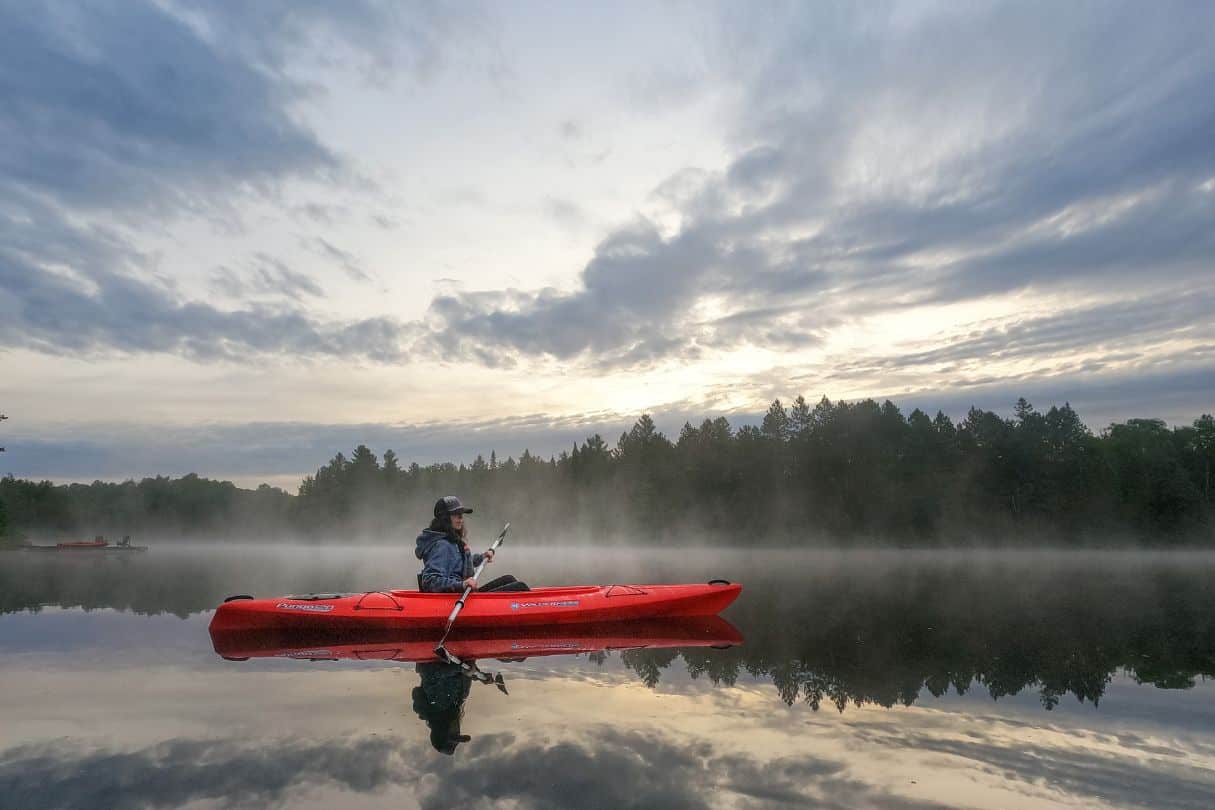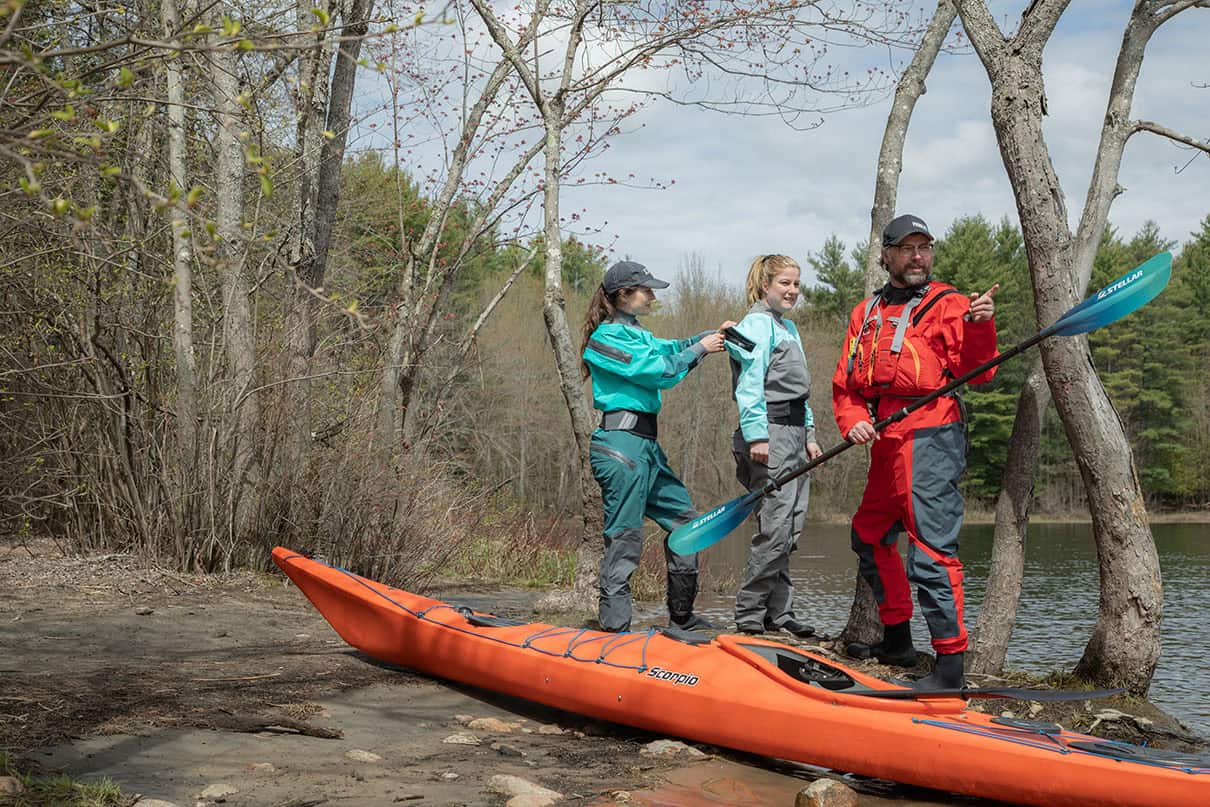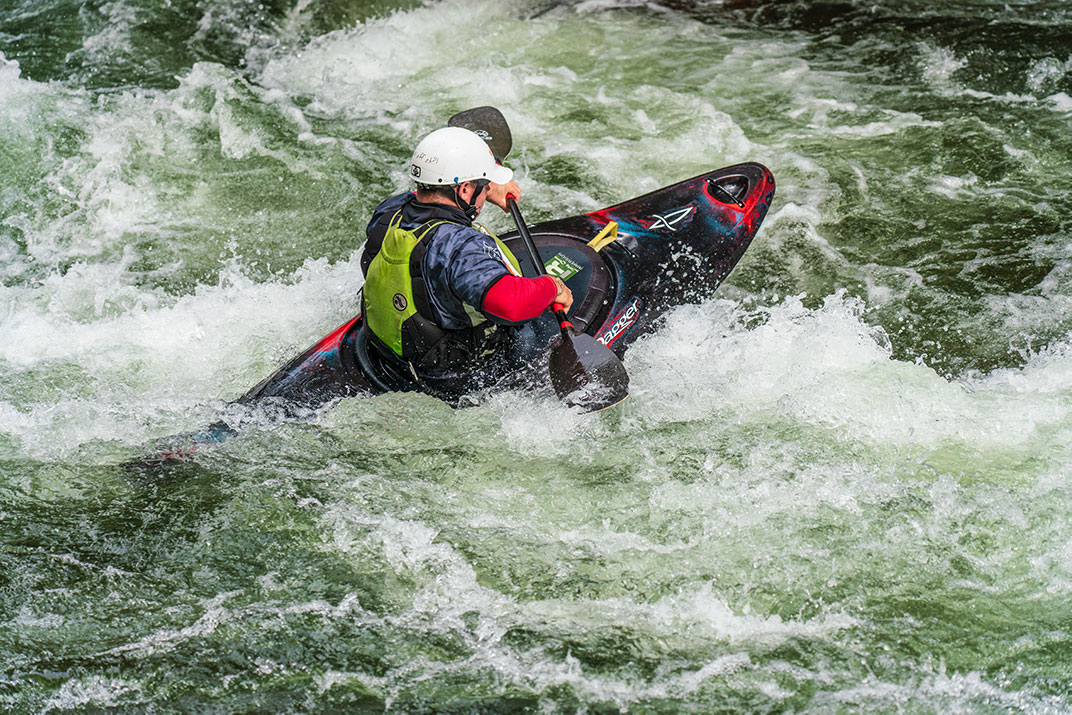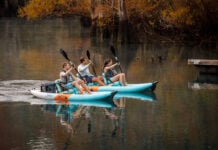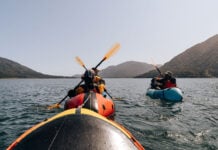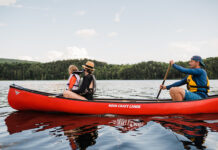Akayak and the right kayak gear and accessories allows you to be in the great outdoors and on the water comfortably, safely and more often. Having a good kayak is not enough. To thrive, you need all the proper kayaking gear and accessories to match your kayak, the waterway, the environment and weather conditions, and the type and length of adventures on which you will be happiest.
I’m going kayaking, what do I need?
Well, it depends. On warm and sunny summer afternoons at the lake, you may need just a paddle, life jacket and just a few safety items compared to what you may pack for a week-long kayak camping trip on the ocean or a run down a class III whitewater river. The gear and equipment you need to go kayaking depend on many different factors, like: the type of kayak, the waterway you’re paddling, the conditions, the temperature of the water and air, the distance and duration you’ll be paddling, and why you’re out there in the first place. There is a basic essentials list for every type of kayaking and then there is all the extra stuff—the fun stuff and the gear and equipment making life on the water or around camp more comfortable and enjoyable.
The basics
The kayak gear and accessories basics list could be as short as a paddle and a life jacket. But this is still not enough to satisfy basic safety requirements in many regions, nor is it best practice. Check your local regulations to be sure.
If you want to keep your lunch dry, the basics list just got longer. If you want to stay dry or catch a fish, even longer still. The basics list here is required by law and/or recommended in most regions and should be considered the bare minimum. Most kayakers always have more with them. Add to your basics list from the specific kayak gear and accessory lists below.
- Kayak
- Paddle (1 per paddler), plus spare
- Life jacket (PFD)
- Whistle
- Bailer or pump
- Rescue throw rope
- Sprayskirt (for cold weather/water)
- Dry bag for personal items
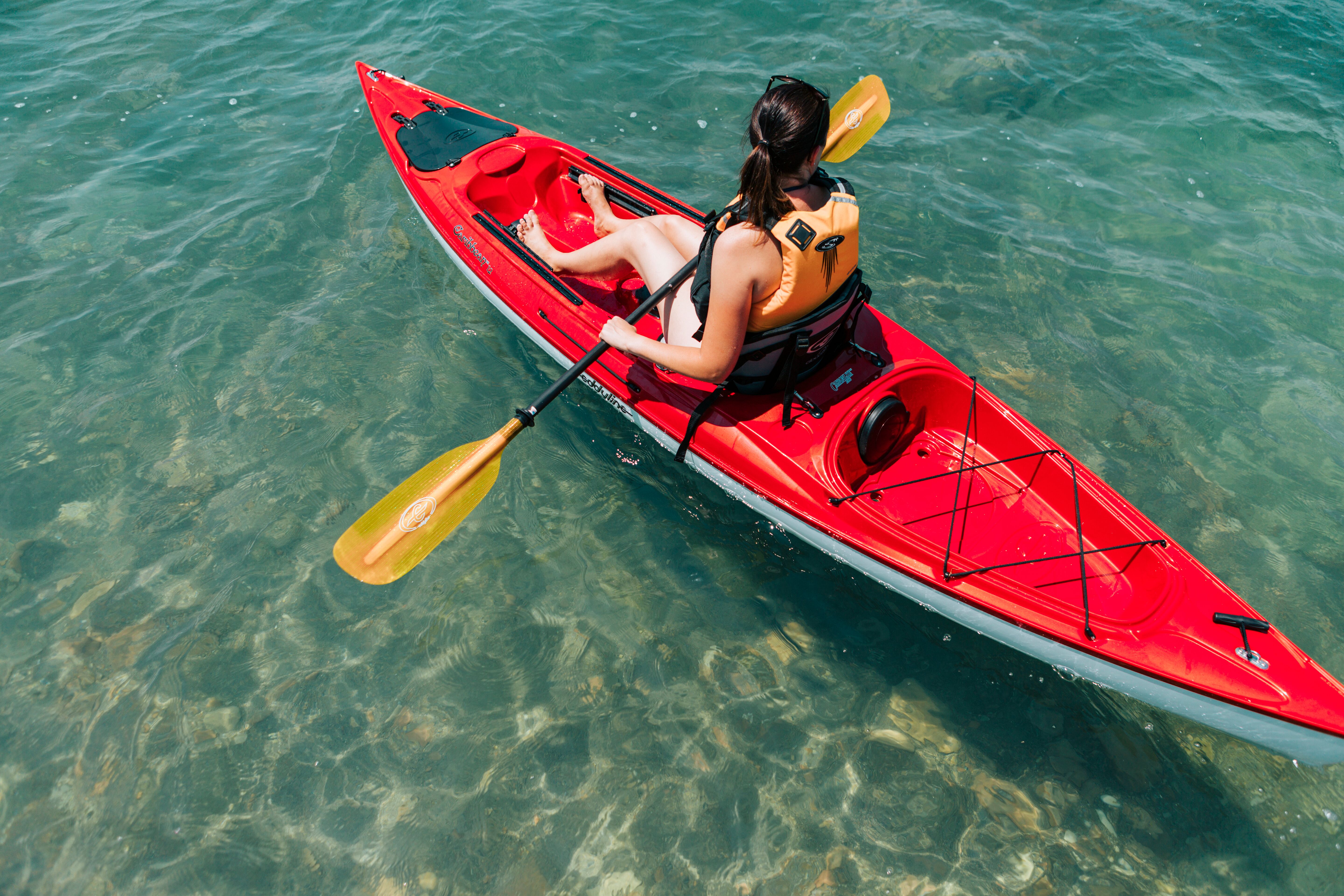
Recreational kayak gear
Recreational kayaks are typically used in protected waters and for shorter trips, usually less than a full day. Recreational kayak gear is typically less rugged and less expensive than the kayak touring gear required for bigger adventures in more adverse conditions.
At one time, recreational kayak gear and accessories were synonymous with cheap gear to go with cheap kayaks. But don’t be fooled, these days there’s a lot of research and development put into designing this stuff and, while typically not as expensive, it can be very functional.
Reputable paddling brands are making good quality recreational kayak gear and accessories. For example: Recreational kayak life jackets are designed with flotation higher on your back, so it rides above the high seat backs; paddle builders balance weight and durability with fair prices; and better recreational technical apparel may keep you dry but may not be as flashy or breathable like the fancy technical fabrics which are three times the cost. You get the idea.
There is an almost endless range of recreational kayak accessories you can stuff inside your cockpit and hatch or strap to your kayak deck. What do you need? First figure out when, where and how you’ll be using your recreational kayak most often and then dive into the links below to get yourself comfortable, safe and enjoying every minute of being on the water.

- Recreational kayak
- Life jacket (PFD)
- Apparel (noncotton and nonbinding, neoprene footwear)
- Accessories
- Dry bag for personal items
- Safety gear (whistle, bailer or pump, rescue throw rope)
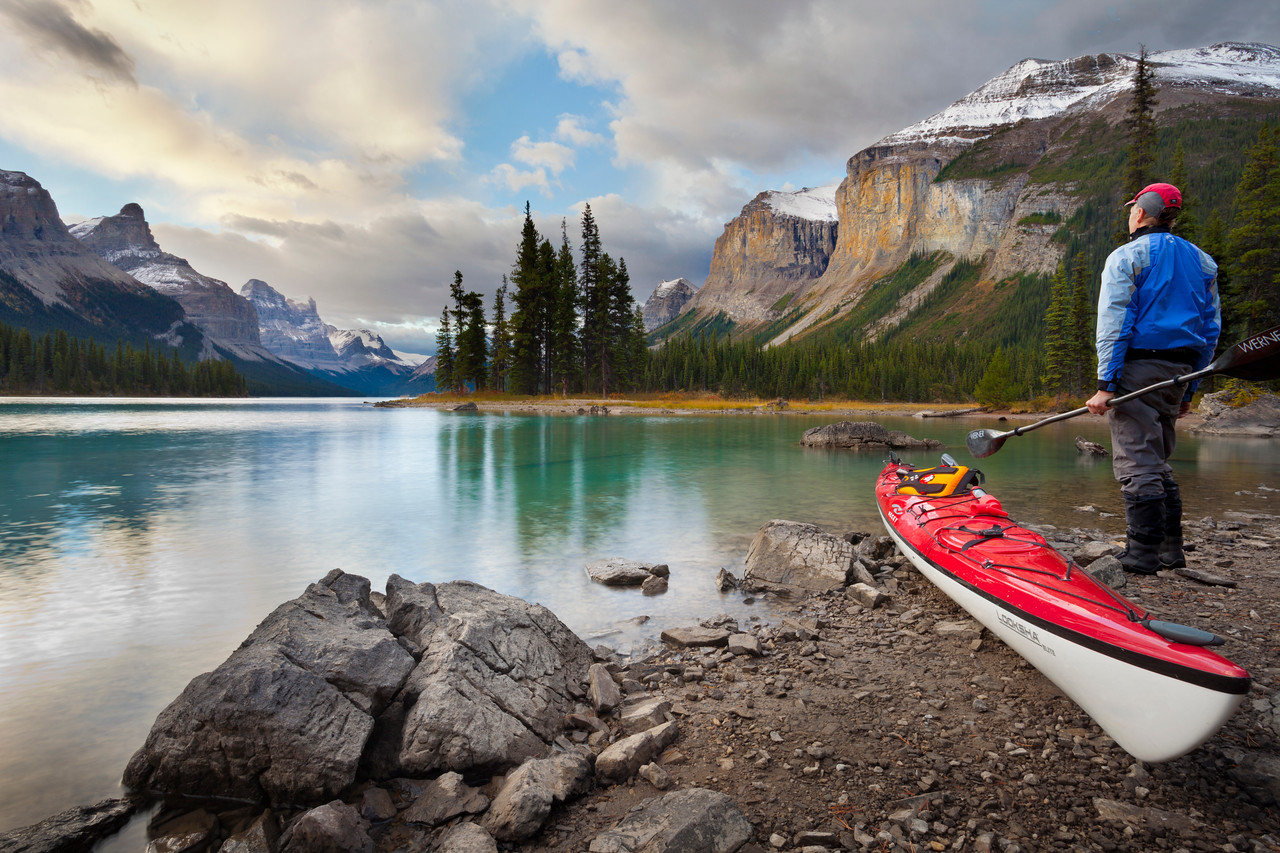
Touring gear
What’s the difference between recreational kayaking gear and accessories and kayak touring or sea kayaking gear and accessories?
For one, touring kayaks and recreational kayaks are quite different requiring different gear and accessories. For example, touring kayak spray decks are smaller than recreational sprayskirts, if recreational paddlers use them at all. Secondly, kayak touring implies you’re going somewhere, often for longer than a few hours, maybe a weekend, or maybe a month.
Kayak touring gear and accessories may look similar and offer the same functionality as rec kayaking gear and accessories, but it’s manufactured with premium materials, it’s lighter, more durable, more comfortable, breathable, more expensive and generally better quality. The general thinking is, if you’re going to be using it or wearing it for longer periods of time you’ll want a better version of whatever it is. Also, if you’re out for longer and paddling in more adverse conditions, there are kayak touring gear and accessory items on our list recreational kayakers may never need on sunny afternoons on the lake, like VHF radios, drysuits and helmets. Kayak touring amps up the adventure and gives us a good excuse to go shopping in the Paddling Buyer’s Guide for more gear and accessories.
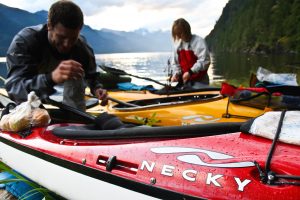
- Paddle
- Life jacket (PFD)
- Sprayskirts & cockpit covers
- Dry suits, Wetsuits & neoprene
- Apparel
- Bags, boxes, cases & Packs
- Safety & rescue
- Accessories
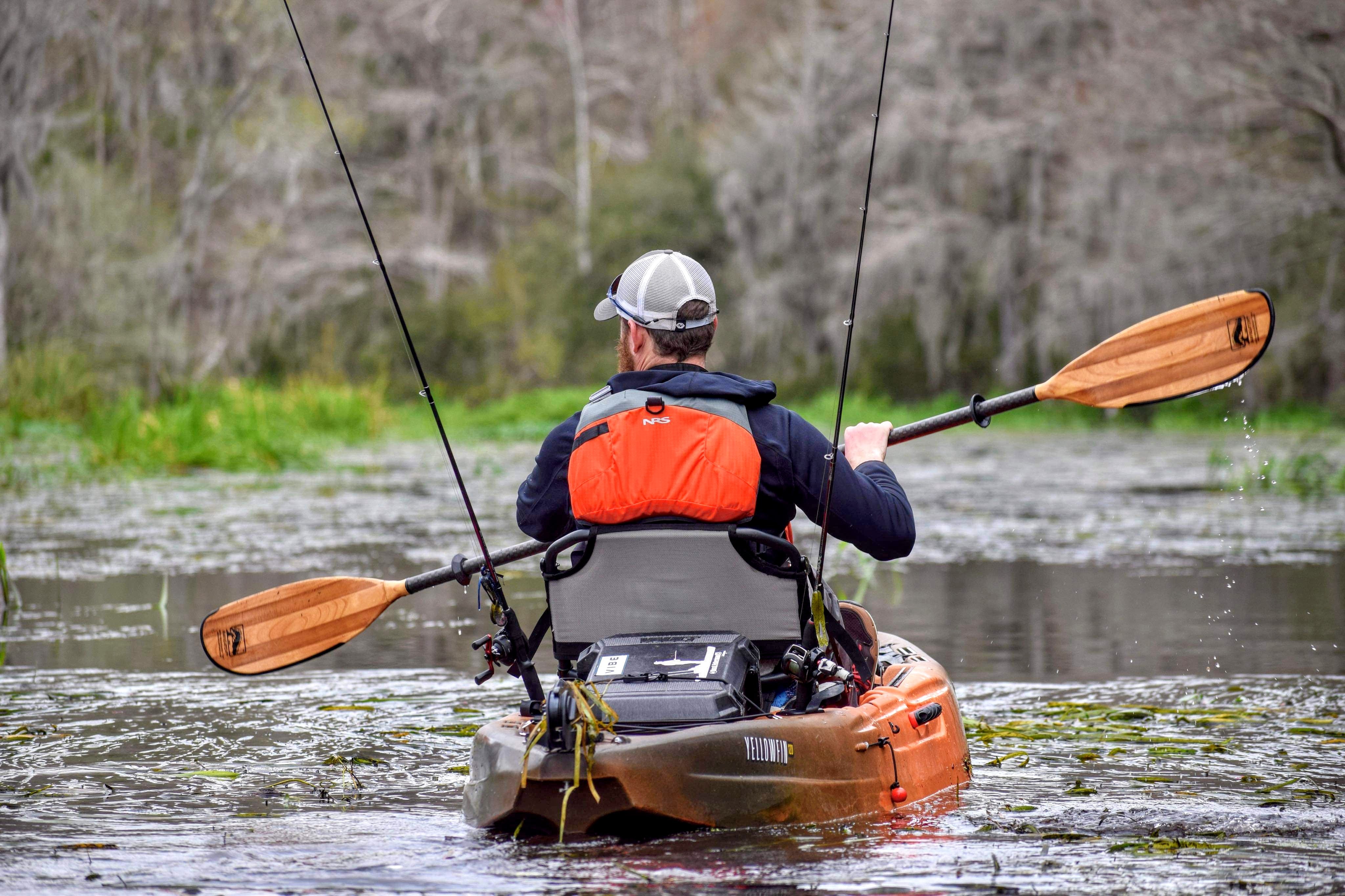
Kayak fishing gear
Shopping for kayak fishing gear is first like shopping for recreational kayak and touring kayak gear. Then add all the extra kayak fishing gear and accessories specific to finding, catching and managing fish. Kayak fishing life jackets have extra pockets and fishy colors; kayak fishing paddles tend to be adjustable with innovative angler features; and kayak fishing technical apparel offers features, color and fit for anglers.
What kayak fishing gear and accessories do you need? The very basic kayak fishing gear is a rod or fishing pole holder and a fancy version of a milk crate to store tackle trays and hold other gear and accessories. After that, the sky’s the limit, really. If it swims, there is kayak fishing gear to catch it. If you can put it on a bass boat, there is a way to mount it on your kayak.
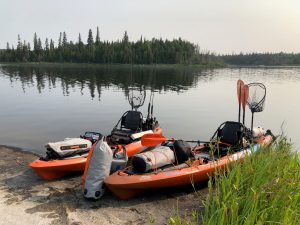
- Fishing kayak
- Paddle
- Life jacket (PFD)
- Apparel
- Transport, storage & launching
- Motors & pedal drives
- Fishing tools
- Rigging & outfitting
- Mounts, tracks & accessories
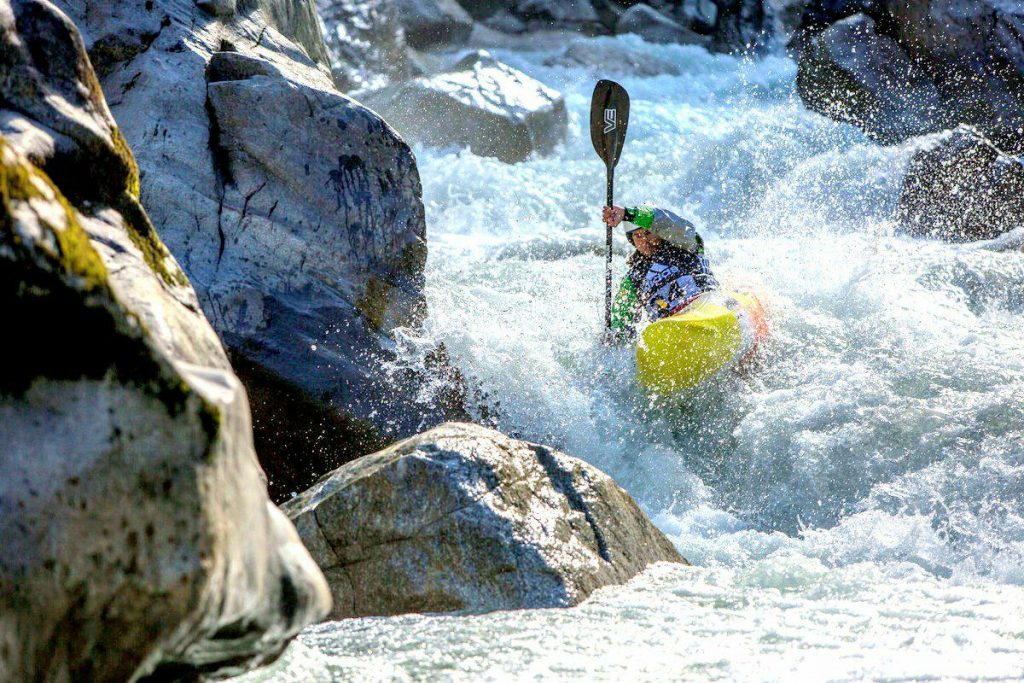
Whitewater gear
Running rapids, dropping waterfalls, and surfing river waves requires a list of specialized whitewater kayak gear and accessories. You’ll want a life jacket with a greater range of motion and features, neoprene sprayskirt, protective helmet, durable paddle, and sticky river shoes. Anyone kayaking rivers should also carry a throw bag of rope, whistle and rescue knife as basic whitewater kayak safety gear. Whitewater technical apparel is designed primarily to keep you dry and warm on and off the river. What you need to wear on any given day depends on water and air temperature.
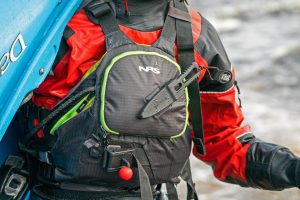
- Whitewater kayak
- Paddle
- Life jacket / PFD
- Technical outerwear
- Sprayskirts
- Helmets
- Footwear (river shoes)
- Safety & rescue (throw bag, whistle and rescue knife)
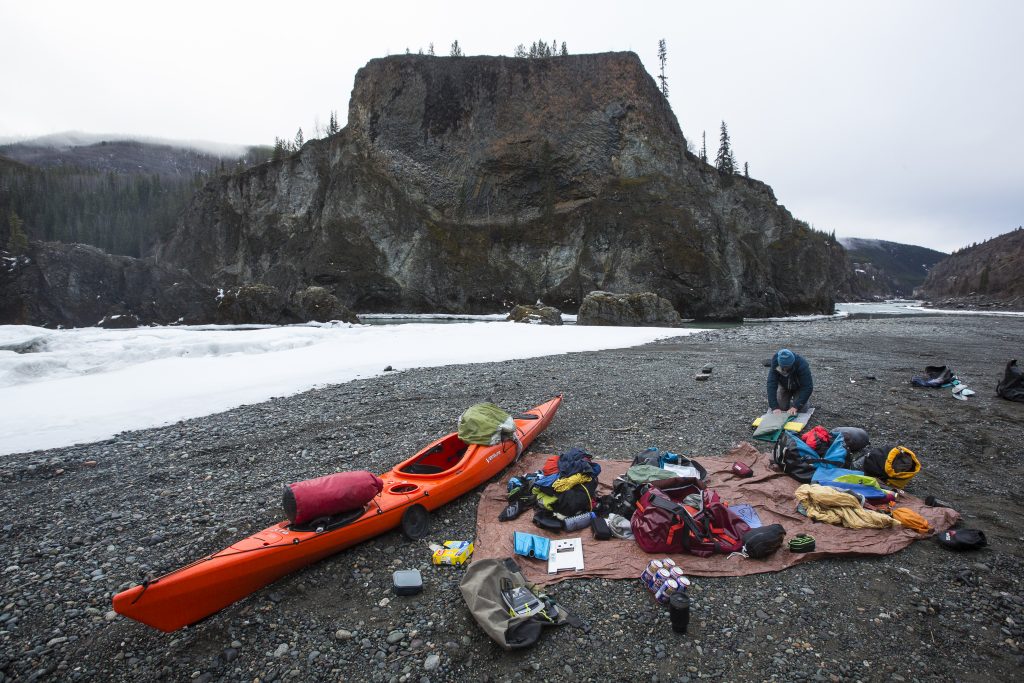
Kayak camping gear
The best part about kayak camping is you don’t have to carry all the gear on your back. In whitewater kayaks, you have to be miserly with gear, however kayak camping with full-sized expedition touring kayaks can be quite comfortable. Kayak camping with some buddies sharing the load among a few boats is truly luxury in the great outdoors.
You’ll need a tent, tarp or other type of shelter and a sleeping bag. For sit-inside kayaks, make sure your tent poles and other awkwardly shaped items fit through your hatches and you have trustworthy dry bags or cases for everything. Kayak camping kitchen stoves and pots must also be small enough to fit through the kayak hatches. Sit-on-top kayaks can be loaded up for kayak camping using dry bags and cases. Either way, food should be packed in sealed bags and again in small drybags, organized by day or type of meal. After a few trips, you’ll figure out your own systems of what to bring on quick overnighters and multi-day trips.
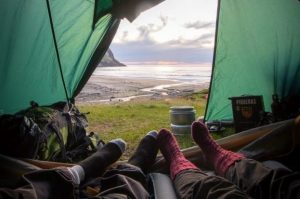
- Tent, tarp or other type of shelter
- Sleeping bag
- Sleeping pad
- Dry bags or cases
- Camping kitchen stoves with fuel
- Pots
- Kitchen utensils (mug, plate, bowl, spork, etc.)
- Water purification system
- Personal hygiene (toiletries)
Feature photo: Courtesy Delta Kayaks


